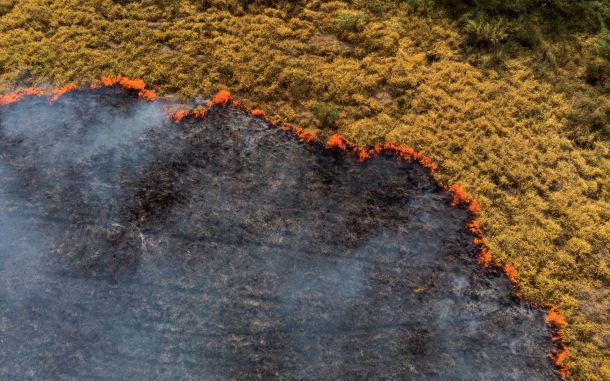Skipping Stones With Math

In This Article
-
Skipping stones is a worldwide phenomenon.
-
Stone skipping is normally a good application area of mathematics and physical sciences; yet Lazzaro Spallanzani (1729-1799), an Italian Catholic priest, is known to be the first person to make a scientific explanation on how stones bounce on water.
-
Stone skipping is a miracle of fluid dynamics. But there's more to it than math and science.
One of my most beautiful childhood memories was stone skipping with my dad. It always seemed mysterious to me when the rocks bounced smoothly on a calm sea on a warm summer day.
Skipping stones is a worldwide phenomenon. Eskimos skip rocks on ice and Bedouins on smooth sand. In England, stone skipping is known as “ducks and drakes”; in France, as “ricochet”; in Ireland, as “stone skiffing”; and in Denmark as “smutting.” Stone skipping is mentioned in the works of Shakespeare and even Homer. The British King’s bouncing gold coins on the Thames River in 1583 is known to be the first public event on skipping stones. From Hindi to Russian to Chinese, every language has a unique word or term for skipping stones. The reason for this may be that everyone wonders how a stone can glide across the water after throwing one. Of course, the secret to a successful skipping is to choose a good stone with a smooth surface, not too heavy nor too light, and the water should be as calm as possible, for wavy water prevents stones from bouncing further.
Stone skipping is normally a good application area of mathematics and physical sciences; yet Lazzaro Spallanzani (1729-1799), an Italian Catholic priest, is known to be the first person to make a scientific explanation on how stones bounce on water. After him, there seems to be a long gap in research until a French physics professor, Lyderic Bocquet, brought this subject to the scientific field in an article published in 2002 and then in another article in 2004. Dr. Bocquet attributed his interest to this topic because of his child. Similar to the father-child memoir mentioned at the beginning of our article, one day Dr. Bocquet was skipping stones on the seashore with his six-year-old son, when his son asked: “Dad, how is it possible? How does the stone skip on water?” Simple questions do not have simple answers. Bocquet reflected on this question, and his scientific interest grew on this topic. Thus, the first thing the professor did was to design small catapults that skipped stones on the water. Later, using these catapults, he bounced the rocks and continued his scientific work.
At the end of his research, he found many factors affecting whether a stone sinks or skips. Commonly known factors are the weight of the stone, its surface, and water stillness. Although everyone is on the same page for the importance of the surface structure of stone, its form is a controversial issue among scientists. Some claim the conservative-known opinion that stone surface needs to be as smooth as possible to get better results. Others, specifically Bocquet, aver its surface should be like that of a golf ball with lots of small pits to reduce the water drag of stone. The water also must be as calm as possible. Inland lakes are better choices when you think of rivers, streams, or seas. Probably almost everyone is disappointed when watching their perfect pitch hit a slight wave and bounce straight up in the air before plunging vertically down into the water.
Professor Bocquet revealed that the throw angle and initial linear velocity of the stone are also important factors. It was he who first invented the term “Magic Angle.” To have an optimum stone bounce in the experiments, the first contact of the stone with water should be at an angle of 20 degrees. Professor Bocquet and his fellow researcher Professor Christophe Clanet from the Institute of Research on Non-Equilibrium Phenomenon in Marseille have sought to deconstruct the hard physics underlying a simple game. Using a specially designed catapult, the scientists shot aluminum disks across a pool of water and then filmed the splashes with a high-speed video camera. After analyzing the results, they discovered the optimum speed and angle a stone-thrower would have to achieve the perfect skip. According to the professors, it’s all down to the conservation of momentum principle, which dictates that as the stone enters the water and pushes some of it downwards, it is, in turn, forced upwards. However, the stone needs to be moving at a certain speed – at least one kilometer an hour – otherwise, the stone “surfs” on the water for a short distance and then sinks. Spinning the stone is also important, because the “gyroscopic effect” generated with spinning ensures stability. So, the stone must rotate with a certain minimum rotational velocity – at least once during its “collision time.”
The magic angle combines with high spin rates results in an optimal toss. In 2011, I. J. Hewitt, N. J. Balmforth, and J. N. McElwaine also pointed out that, in theory, a skipping stone will bounce indefinitely across the water if it can maintain the horizontal speed. Skipping stones spend 100 times longer in the air than they do on the water. Since air is 784 times less dense than water, its impact on the rock's flight is relatively minimal. We could say stone skipping is a miracle of fluid dynamics. But there's more to it than math and science.
There are even Olympics around the world for skipping stones. There is even an official record for bouncing water, according to the Guinness world record book. On September 6, 2013, the record was broken by Kurt “Mountain man” Steiner (b. 1965) in Red Bridge in Allegheny National Forest, Pennsylvania, US. The number of bounces of the stone in the water was 88. His world-record skip was calculated at 43 miles per hour (69.2 km per hour). In other words, for the stone to bounce 88 times in the water, it must be thrown at a speed of 69.2 km per hour. Likewise, if you can speed the stone 100 miles per hour, you can bounce it 300-350 times on the water.
The Guinness World Record for the furthest distance skipped using natural stone stands at 121.8 m for men, established by Dougie Isaacs (Scotland), and 52.5 m for women, thrown by Nina Luginbuhl (Switzerland). These records were made on May 28, 2018, at Abernant Lake, Llanwrtyd Wells, Powys, Wales.
Up till now, we understand a functional structure for the stone to ricochet on water. The stone is unaware of this mathematical equation, nor is the water on which it bounces. But what is in this to benefit? Where will we use this knowledge in life? These are some of the questions that students often ask in math class. Let’s note that other than participating in the stone bounce Olympics or having a good time with your kids, this knowledge on skipping stones have real-world applications including for military purposes. For example, England’s Air Force used water bouncing bombs in dam raids during World War II. Operation Chastise became one of the most famous bombing campaigns of World War II. The intelligence behind the operation was simple: the Mohne, Eder, and Sorpe dams were vital to Germany's war effort; their destruction would disrupt the water and electricity supplies to the Ruhr, Germany's industrial heartland.
Since the Germans knew the importance of those dams, they were protecting them very well. The anti-aircraft guns that defended the dams did not bring the planes closer to them. Since the hit rate of bombs dropped from afar was low, those who hit the dams did only minor damage, and the Germans immediately fixed it. Besides, steel nets were stretched in front of the dam against torpedoes coming under the water. In this case, a bomb had to be thrown in advance, hit the dam, bounce off the water, and then explode 30 feet deep underwater. Thus, even if only one bomb hit, the dams would be destroyed by the pressure of the water.
The bombs themselves were invented specifically for the dam mission by the aircraft engineer Dr. Barnes Wallis, the designer of the Wellington bomber. They were barrel-shaped and used the principle of a “ducks and drakes” stone bouncing on the water to bypass the defenses around the dams. The bomb is dropped close to the surface of the lake. It bounces several times instead of sinking. The “bomb run” is calculated so that the bomb will reach close to the target at its final bounce, where it sinks. A hydrostatic pistol causes it to explode at the proper depth, generating destructive shockwaves. On May 16, 1943, Operation Chastise took place; 147 men flew 19 aircraft carrying “bouncing bombs.” The Mohne and Eder dams were breached, and the successful operation damaged the Sorpe dam.
Historically, it is claimed that Sultan Mehmet the Conqueror bounced the cannons of that time in the water and had the Byzantine walls beaten during his conquest of Istanbul in 1453.
Does anybody think of the math behind the stones they throw across a lake and see them bounce off water? Does the stone know how it can move on a liquid? Stones do not have brains or hearts to grasp this knowledge, but we humans do. As we are thrilled when we witness the mysteries and wonders of nature, we understand with the help of science that even a stone bounces with a functional structure as a small part of a miraculous program.e.
Verily, all things have We created in proportion and measure.
What do you need to skip stones like a pro?
1. Choosing the location
Lakes and ponds are perfect choices for any location where has a calm body of water. Though, clear and still day is a crucial factor.
2. Picking the flawless stone
A thin and flat stone about the size of your palm, preferably oval or triangular: should be reasonably light but still heavy enough for a solid and accurate throw.
3. Adjusting your posture
Squat down slightly and adjust your throwing hand so that the angle between the stone and the water is about 20 degrees.
4. Bend and snap
Bend your wrist back to generate power (like winding up for a softball pitch) and then snap it forward, releasing your stone with your palm facing upward. As your wrist flicks on, the stone should slide right through your thumb and middle finger as the index finger sends it spinning. The bend and snap should be a swift, fluid motion. The speed of the snap determines the speed of the stone.
5. Follow through
Don’t halt your throwing motion when the stone leaves your hand. Extend your arm across your chest to the shoulder of your other arm. Much like a proper tennis swing, you need to follow through to maintain a reasonable force and power.









